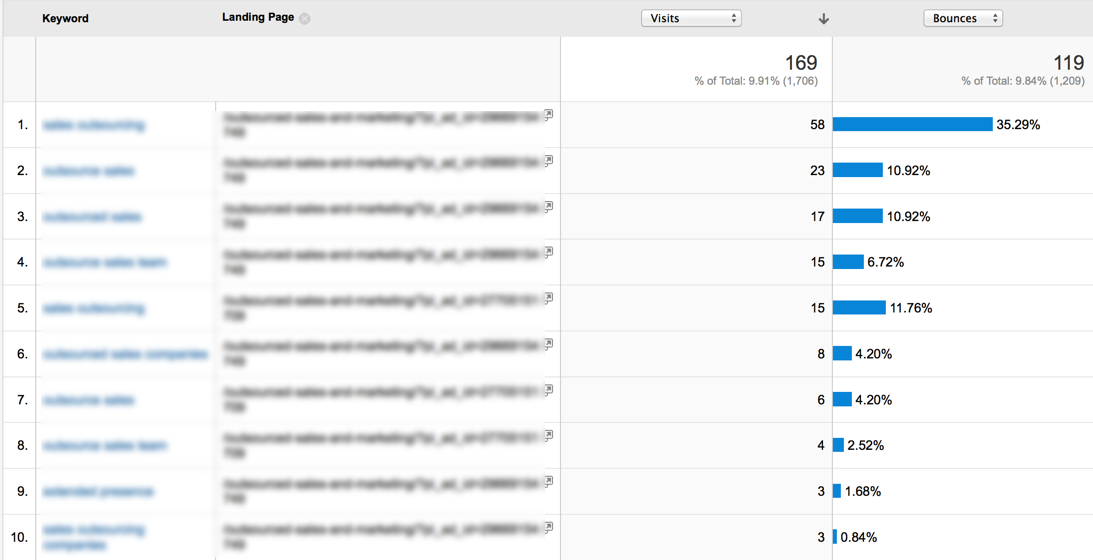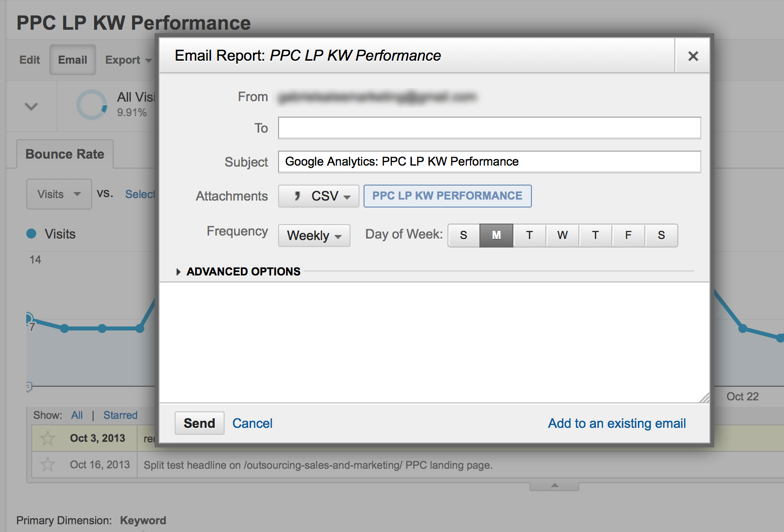Bounce rate (if you are unfamiliar) is the percentage of visitors who leave a site without visiting any additional pages. Besides goal conversion rates, improving bounce rates is an excellent starting measurement point for indicating improved landing pages.
For landing page optimization, the bounce rate is a gauge of how relevant, interesting or educational your content is related to the referring source. Look at your top landing pages by referring source and to see where you are providing a good inbound experience and conversely where you need to create a better experience.

As an example analysis, below we see that our bounce rate is higher than we’d like on our AdWords campaign:

So we drilldown into the keywords to see which ones are performing least effectively (Hint: build a custom Google Analytics report):
By finding this information, we might decide to:
1) Move the poor performing keywords to a different Ad Group and create a new ad/landing page that is more directly related to the keywords we’ve moved.
2) Improve messaging to make the benefits more clear and share quantitative claims to better communication our offer.
3) Add a stronger and simpler call to action (e.g. reduce form field requirements) that supports getting our visitors to engage.
4) Split test headlines, images, call to action phrases and layouts.
Utilize the annotation feature of your web analytics platform so you know the start and end points for comparing performance and see results:

Lastly, to further take advantage of your web analytics tool, schedule a report (daily/weekly/monthly) to be emailed to you so you don’t forget to do the follow-up analysis on improvement or degradation.

As you can see working on bounce rate reduction can be a serious undertaking, especially if you are focusing on a page-by-page basis. Start with your most heavily visited landing pages to have the highest impact in the most efficient manner. Hopefully the steps above make your bounce rate improvement project more manageable.
This article is part of a new series in which we feature specific ways to use inbound marketing analytics for improving your marketing performance.




